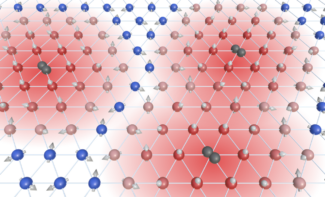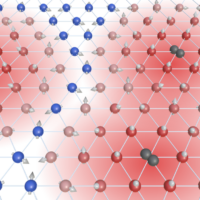News
Emergent ferromagnetic states revealed in a geometrically frustrated triangular lattice
In a material, the way electrons align their spins to form a magnetic phase strongly depends on the geometry of the crystal they inhabit. In particular, triangular lattice geometries display an effect called geometrical frustration, where up and down spins cannot all be antialigned classically. This effect is thought to give rise to complex and exotic phases, such as quantum spin liquids, in the presence of antiferromagnetic interactions.
In recent publications, the Greiner group used ultracold lithium atoms trapped in standing waves created by laser beams (known as optical lattices) to simulate electrons in frustrated crystals with great control. This experimental platform can be accurately described by the Hubbard model, a model central to condensed-matter physics which both captures electronic motion and interactions. For a specific density of one atom per lattice site, antiferromagnetic correlations inherent to the Hubbard model are shown to be suppressed in a triangular optical lattice due to frustration, using optical microscopy to read out spins with single-atom resolution. Surprisingly, increasing density tends to locally induce ferromagnetic alignment around the itinerant atoms added to the weakened antiferromagnetic state. This represents a direct observation of a form of ferromagnetism predicted more than 50 years ago by Japanese physicist Yosuke Nagaoka, and is closely related to recent experiments performed in materials known as Transition Metal Dichalcogenides. These works also highlight experimental regimes where frustration makes classical simulations particularly challenging, calling for state-of-the-art numerical methods to accurately describe experimental measurements.

